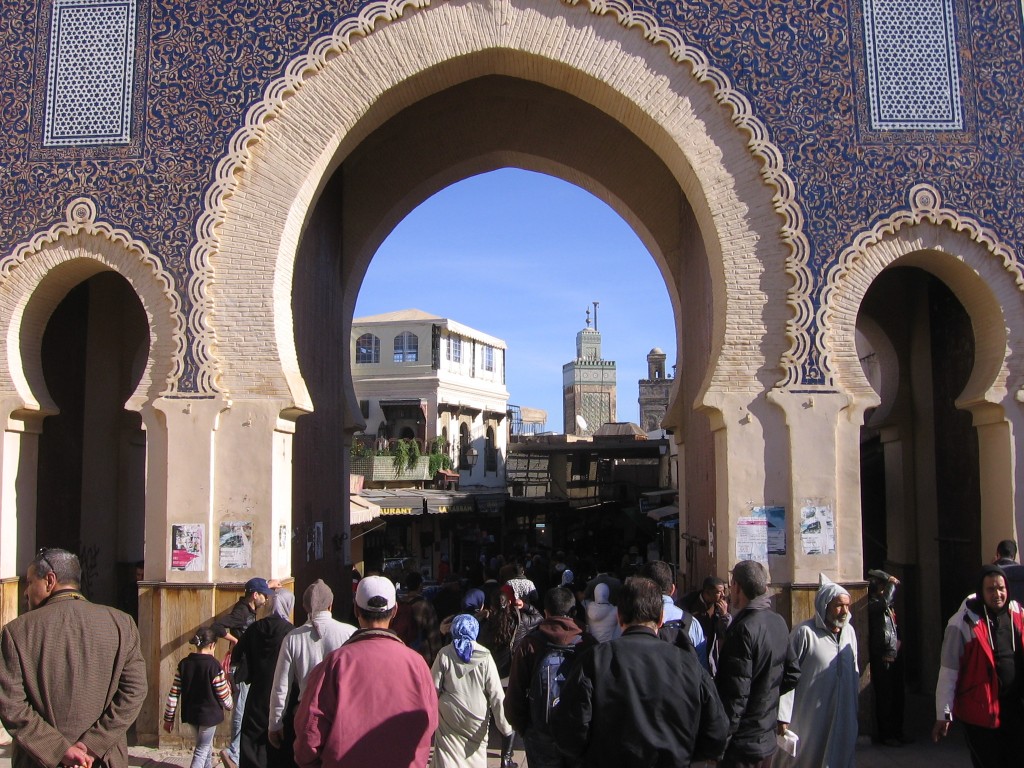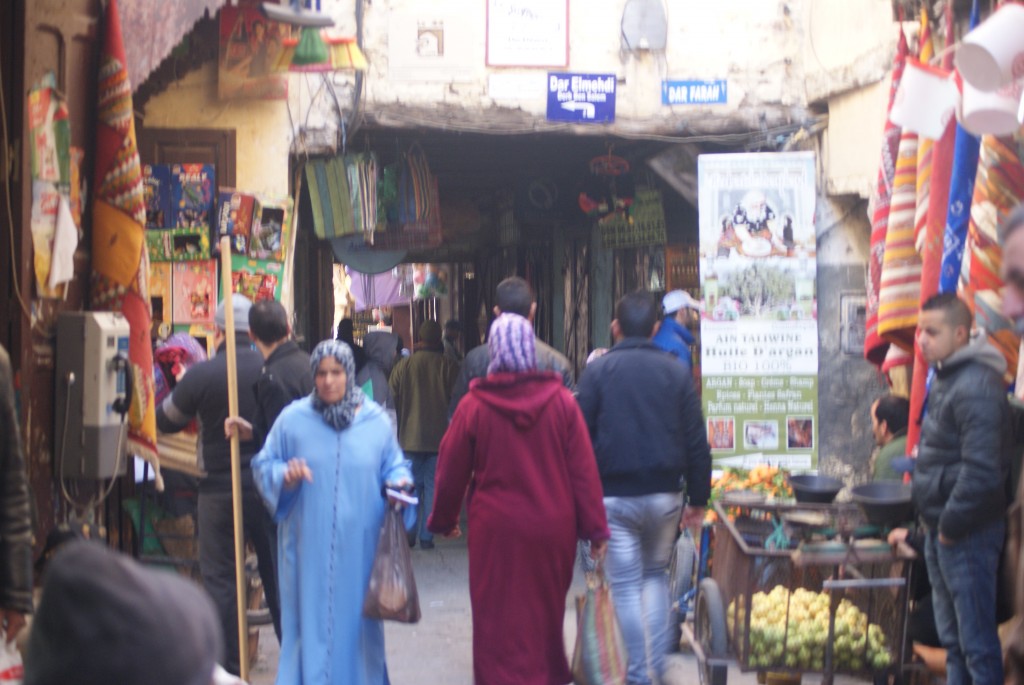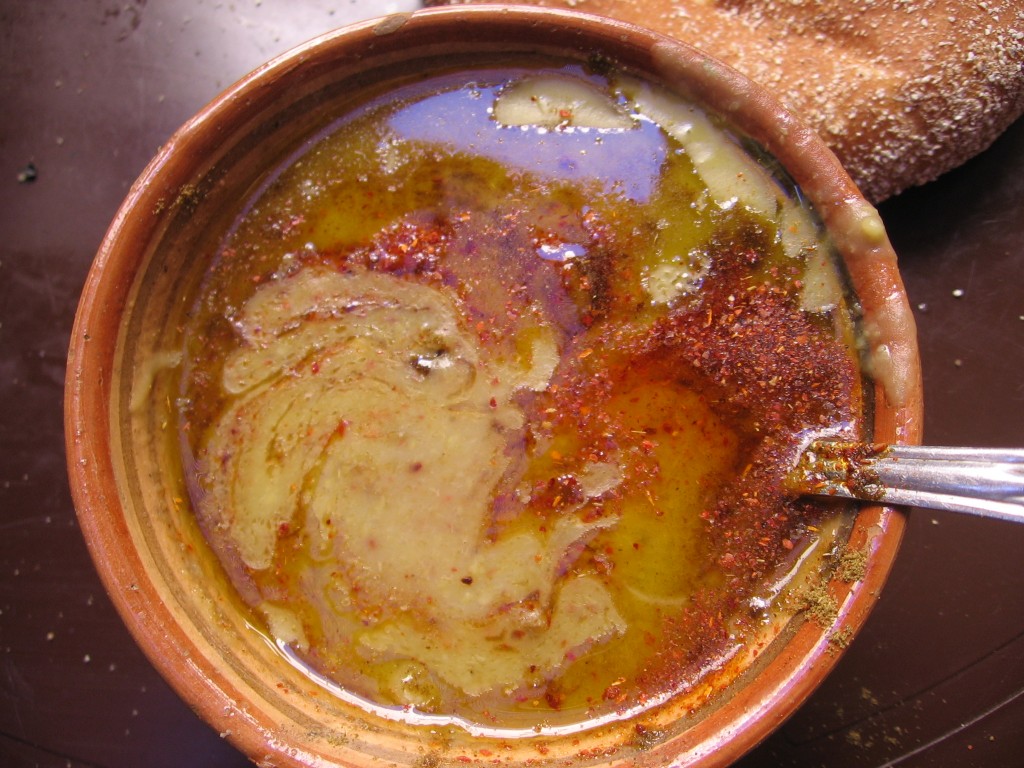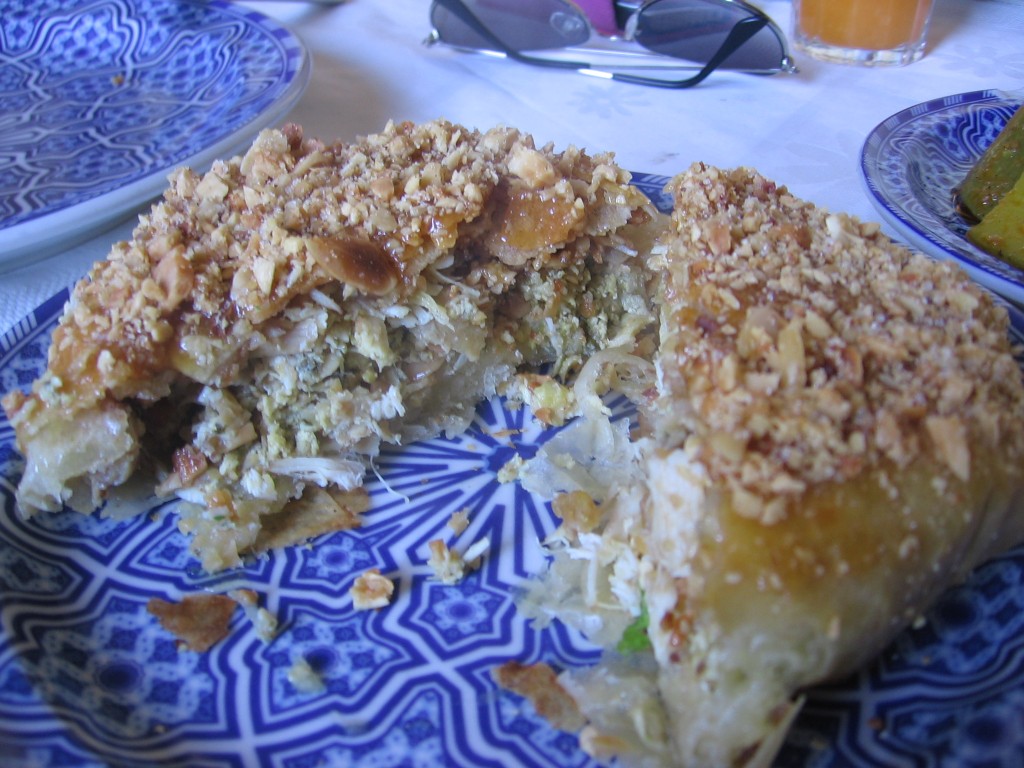“Now, we go to the supermarket”, says Abdullah, with a smile. We know the smile is ironic and that we are not about to walk into a Safeway. My son Rohan, our Malaysian friend Fazila, and I have hired Abdullah to guide us through the labyrinthine streets of Medina El Bali, the ancient quarter in the city of Fes, our last stop in Morocco.
Walking in the medina is like stepping back into medieval times. Everything is at a miniature scale. Streets are narrow, some barely wide enough for one person to squeeze through. There are no motorized vehicles in sight, everything is transported by mules.
There are no straight lines; everything is a twisty, turning maze. Some streets are loosely covered with wooden planks, some like tunnels, ducking under houses. Some are quiet, others bustling with people and activity. Every now and then, a small square filled with sunlight appears, providing respite from the chaos and congestion of the streets.
Abdullah grew up in the medina. He has mind-boggling facts to share: the medina has 10,000 streets, 350 mosques, 225 fountains, 18 gates and a population of 160,000. It is the biggest medina in the Islamic world. It is home to El Quaraniya, the oldest university in the world.
We enter the “supermarket”: a street lined with dozens of tiny shops, selling fruits, vegetables, fresh meat, live chickens, fish, dates, olives, sweets, an endless variety of things. There are lots of shoppers, mostly locals, men in the traditional Moroccan djellaba, women wearing the traditional kaftan.
Abruptly, the grocery market ends and we turn into a different market, selling clothing and kitchenware. The “supermarket” goes on and on… we see metal workers’ street, leather workers’ street, brocade workers’ street. Abdullah tells us that Fes has been the center of Moroccan handicrafts for centuries.
Abdullah takes us to Bab Bou Jeloud, the Blue Gate, the most beautiful of the 18 gates of the medina. It is spectacular, with intricate calligraphy in green on the inside and blue on the outside. Just inside, there is a beautiful fountain, covered in a colorful mosaic of tiles.
After exploring the medina, we arrive at a street bustling with little food stalls. I see a stall where there is a large pot of what looks like a bean soup, with people outside eating the soup from earthenware bowls with bread. I think I know what this is; I have read about this in my Moroccan food book! It is “bisara”, a thick soup made from fava beans, a Fes specialty. The aroma is enticing. The shopkeeper smiles as he hears me say “bisara” and invites us to sit down. Soon, we are looking at steaming bowls of bisara, topped with a generous dash of olive oil, sprinkled with cumin and paprika, accompanied by fresh round flatbread. Hmmm….deeply satisfying.
Afterwards, we climb up some steps at a leather goods shop to get a view of the famous tanneries of Fes, where hides of camels, sheep and cows are cured and dyed.
Soon, it is lunch time and Abdullah wants us to sample Bastilla, an iconic Moroccan dish. He knocks on an old wooden door. A jovial man invites us into a beautiful courtyard. The man and his wife run a side business, serving traditional home cooking. Soon, we are feasting on a variety of appetizers. There is roasted eggplant with tomatoes and garlic, stewed potatoes, roasted fava beans and a yogurt salad. And then, the bastilla arrives, a sweet-savory pie made with chicken, powdered sugar and spices.
It is rich and delectable. After the meal, the lady of the house invites us to the terrace to see the view. She speaks a little English and Fazila has a little Arabic, so we talk, as we take in the panoramic view of the medina. She tells us about life in the medina, her desire to travel and how much she enjoys meeting travelers from around the world.
Our tour ends at the wishing well near the mausoleum of Molay Idriss II, the founder of Morocco. For centuries, people have been dropping a coin into the well and making a wish. Abdullah gets nostalgic as he poses next to the well, just an opening in a window. He tells of growing up poor in Fes, and as a teenager, dropping a coin in the shrine, wishing for a motorcycle, and magically, getting one.
We drop a few dirhams in the little hole, wishing for another trip to this fascinating city.
~ Rahul Vora is a world traveler, adventurer and culinary explorer. He teaches world cuisines in his home in Portland, Oregon and blogs about his travels here. Rahul also has a real job as a software engineer.




